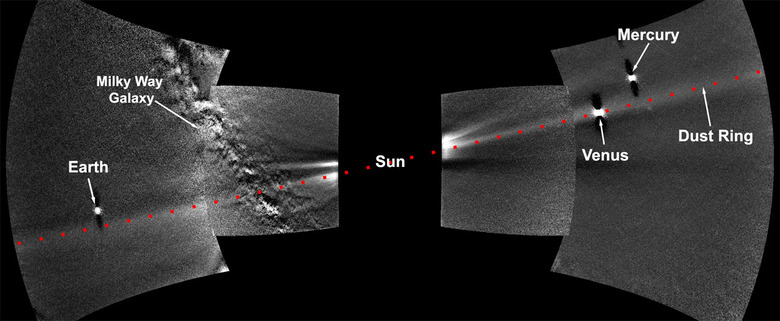NASA Parker Solar Probe Snaps Images Of Venus' Dust Ring
A new image taken by the Parker Solar Probe has been shared by researchers at Johns Hopkins Applied Physics Laboratory. The image shows the first complete view of a dust ring surrounding Venus. The dust ring's particles stretch for the entirety of the planet's path around the sun.
Researchers published the new images on April 6, and they cover almost the entire 360-degree view of the ring. Researchers say the images represent a complete picture of the dust ring that scientists had only seen hints of previously. Those previous hints came from images taken by the Helios probes in the '70s. Hints of dust rings had also been observed in work from the NASA Solar Terrestrial Relations Observatory probes between 2007 and 2014.
The lead author of the study Guillermo Stenborg from the US Naval Research Laboratory in Washington, says that this is the first time a circumsolar dust ring in the inner solar system has been fully revealed via "white light" images. The main duty for the Parker Solar Probe is to study the Corona of the sun and solar wind.
However, the team operating the probe did intend from the beginning to try and capture images of the Venusian dust ring using Parker's Wide-field Imager for Parker Solar Probe (WISPR). WISPR has two telescopes that work together to provide a field-of-view of more than 95 degrees. It was designed to capture wide-angle images of the solar wind and white light.
The first glimpse at the Venusian dust ring in WISPR images was discovered using images from the spacecraft in August and September 2019 as it performed a series of rolling maneuvers to manage momentum. The rolling maneuvers made seeing the ring possible as it allowed for customized image processing to reveal faint, stationary features.

Interestingly, at first, the team thought the ring, which appeared as a bright band stretching across the blackness of space, was a streamer. A streamer is a coronal structure that glows due to the electrons inside it. After eliminating the possibility that it was an artifact in image processing, further work determined it lined up perfectly with the orbit of Venus.
